THE EXHIBITION DELVES INTO THE LIFE OF THE ARTIST AND PHOTOGRAPHER MANIT SRIWANICHPOOM WITH ‘BLACK’ AND ‘BLUE’, TAKES US TO THE JOURNEY OF DEATH AND THE AFTERLIFE OF HIS ICONIC CHARACTER, THE ‘PINK MAN’, WHILE DISCUSSES THE PHENOMENON OF ASSOCIATING MEANINGS WITH COLORS THAT THAI SOCIETY HAS WITNESSED OVER THE LAST SEVERAL YEARS.
TEXT: TUNYAPORN HONGTONG
PHOTO: KETSIREE WONGWAN
(For Thai, press here)
Manit Sriwanichpoom’s photography series, ‘Pink Man’ is undoubtedly his most renowned work. The series is so successful that whenever the name Manit is mentioned, we always automatically think of Pink Man. Some people even mistake that the Pink Man in the photographs was Manit himself (actually Sompong Tawee, a poet and performance artist, is the person who took the role of Pink Man in the series).
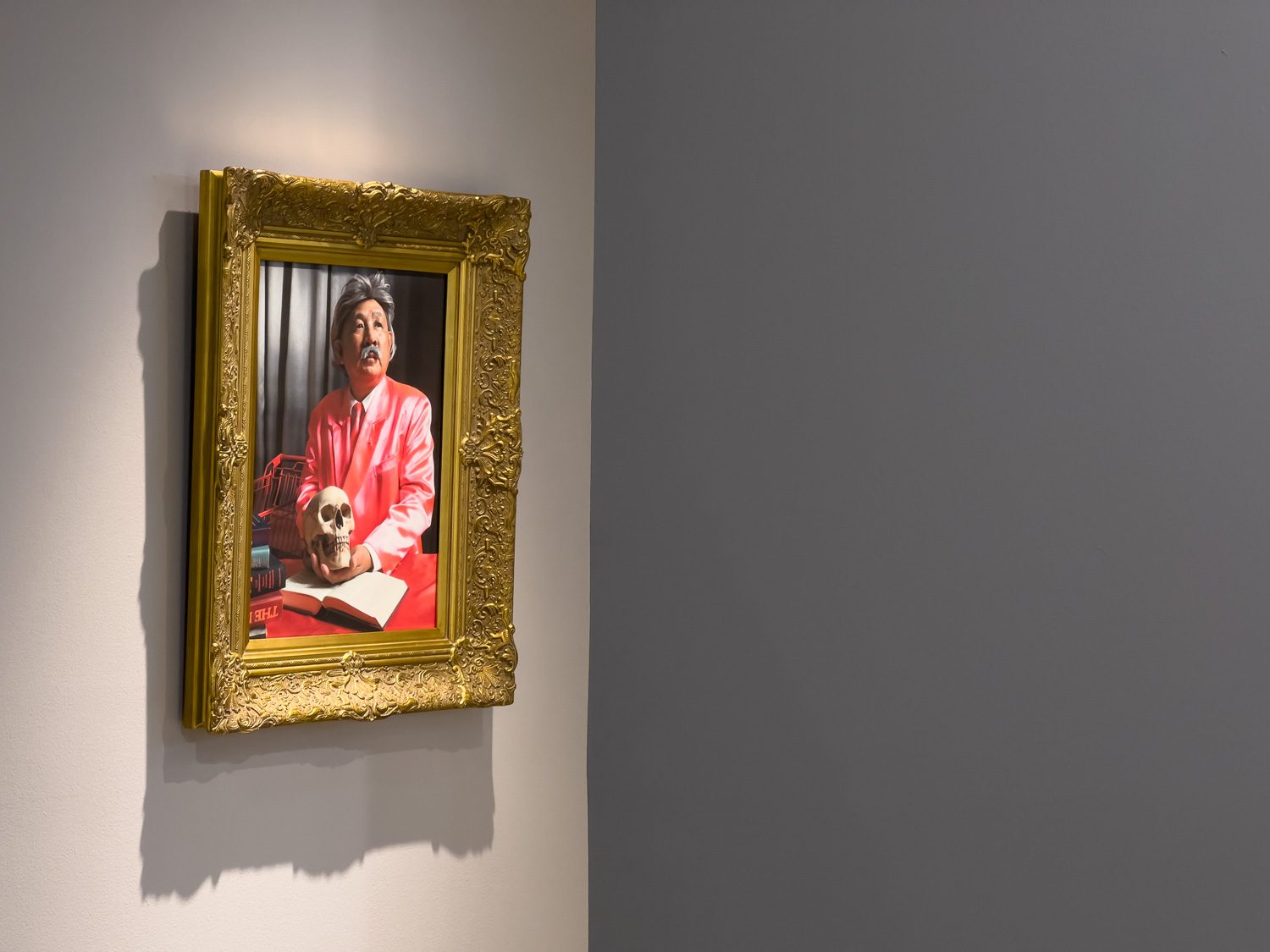
Manit created Pink Man in 1997 as the character of a chubby Asian man who wears a shocking pink satin suit and travels with an empty shopping trolley embellished in the same color as his outfit. Pink Man is represented the extreme consumerism that was taking over Thai society to the point where one had no care for other aspects of society that did not concern them. Manit then went on to create many more of his Pink Man series, such as ‘Pink Man on Tour’ (1998), where the character was captured in his journey to a variety of different places and incidents, both inside and outside of Thailand, with his expressionless face. Pink Man’s appearance in ‘Horror in Pink’ (2001) shows the character at the October 6th 1976 massacre and Black May, also known as “Bloody May,” two of Thailand’s most tragic and violent political incidents, with a face that looked like he was enjoying an entertaining spectacle.
In most of the series, Pink Man took the spotlight. Pink Man’s presence in ‘Hungry Ghost’ (2003) was not just as the main character, but appeared with the size of towering skyscrapers, the scale that would probably equate his giant ego. Nonetheless, in some series, such as Pink Man in Venice (2003), Manit chose to photograph the character from a distance, resulting in a miniature version of Pink Man. In some of the photos, he stood on the edge of the vast body of water, looking absentmindedly, with no shocking pink trolley by his side. Seeing that, I couldn’t help but wonder about his next journey. Will he undergo any changes? What was his fate going to be after consuming pretty much everything throughout his entire existence?

Pink Man had been on numerous adventures before arriving at the final answers to these questions. In 2018, Manit created ‘The Last Man and the End of His Story’, a series of photograph in which we saw a pink body bag lying on the side of the road in America, with a pink trolley by its side. The series was undoubtedly about Pink Man’s demise. However, when we look at ‘Dropping the Pink Self’ (2018), another work Manit created in that same year, it becomes unclear whether Pink Man’s death refers to the end of his actual life or a metaphor for him forfeiting something. Manit’s ‘Dropping the Pink Self’ (2018) was inspired by Ai Weiwei’s ‘Dropping a Han Dynasty Urn’ (1995). But while Ai dropped a Han Dynasty urn which shattered to convey the time of the demolition and reconstruction of Chinese culture, Pink Man, on the other hand, dropped a figurine of himself to the ground, causing its head to fall off.
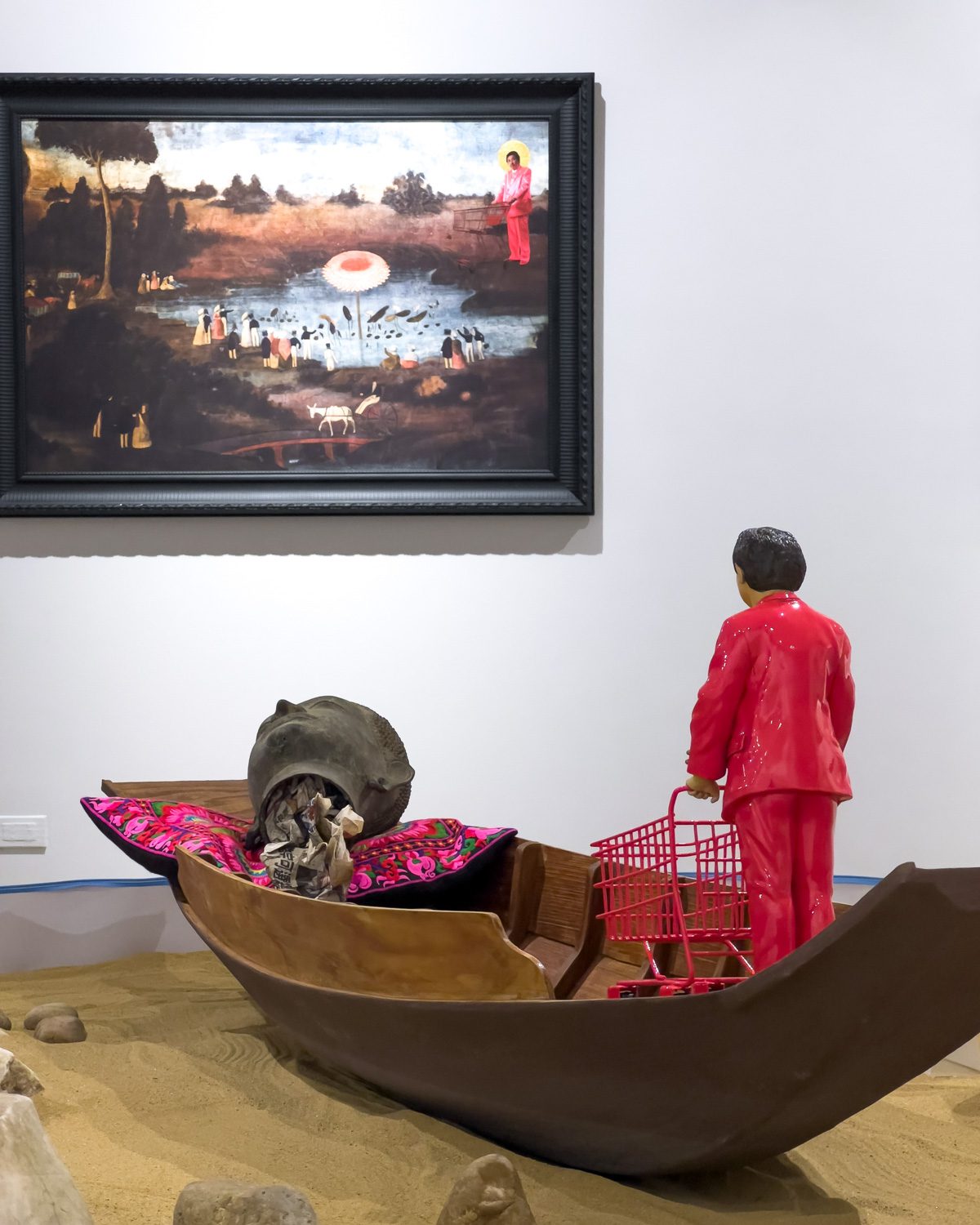
Pink, Black, and Blue, Manit’s latest solo exhibition, reintroduces the two iconic works. The exhibition also includes ‘Afterlife So Pink #2’ (2023), an installation of a Pink Man doll on a wooden boat, a universal symbol of the human journey into the afterlife. But, being the Pink Man that he is, sitting with him on the boat is the head of a Buddha sculpture, and it appears that the boat floats inside an inflatable kid’s pool with a bold, kitsch sea animal pattern. In Heavenly Pink (2023), Pink Man makes his way into ancient Thai mural paintings, from the one where he stands amongst angels in heaven—the scene which depicts an event from the Buddha’s life story when Lord Buddha met Angulimala—to the iconic painting by Khrua In Khong (an avant-garde Thai artist in the past whose work has been featured in artworks of some contemporary Thai artists recently). As wild as the imagery that Manit created, Pink Man’s journeys in this series are open to all sorts of viewer interpretations. One might draw the conclusion that Pink Man has set himself free from consumerism, or that these photographs simply portray his unquenchable desires even after his death.
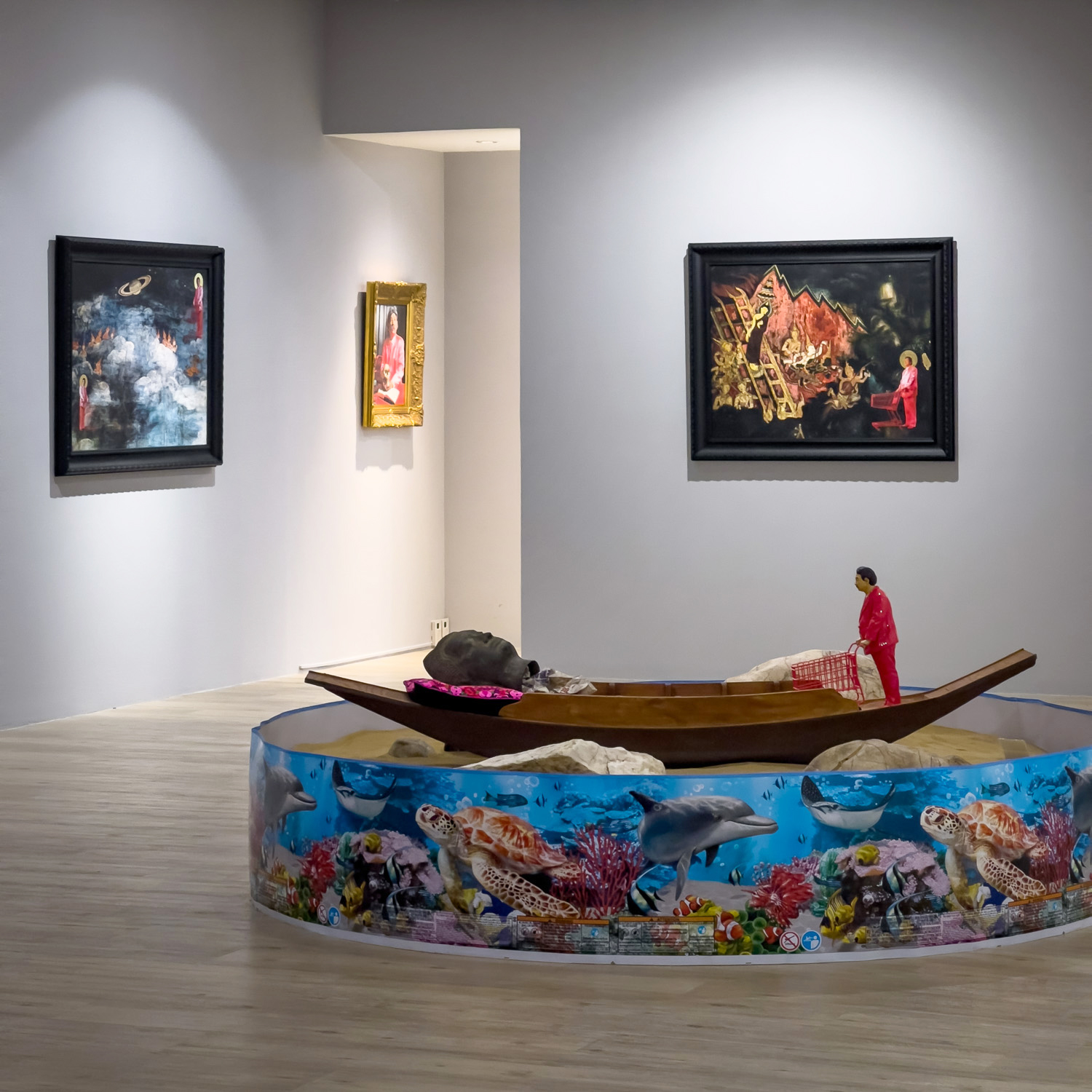
Pink Man’s story is curated as part of ‘Pink,’ one of the colors into which the exhibition is divided. The two remaining colors are ‘Black,’ which includes ‘When I Was Twenty,’ a series of black-and-white photographs Manit took when he was a student, and ‘Blue,’ which includes ‘I Saw A Blue Wing,’ a collection of Manit’s snapshots that tell the stories he experienced while participating in art exhibitions abroad. When it comes to the narrative, the two sections of the exhibition are less intense than ‘Pink,’ yet they allow viewers to learn more about Manit’s identity. His rebellious spirit (Black) was clearly visible in the works he created during his younger years, just like his slightly dark humor in the snapshots he took (Blue), and they can still be found in Manit’s artistic creation even today.

Nonetheless, the important roles that Black and Blue play alongside Pink do not end there. Manit’s decision to use more colors than just pink for this exhibition is most likely motivated by his desire to discuss the meanings associated with ‘colors,’ a phenomenon that Thai society has witnessed over the last several years, from how certain colors are used to express one’s loyalty to the monarchy or political standpoint, or to symbolize what constitutes the nation.
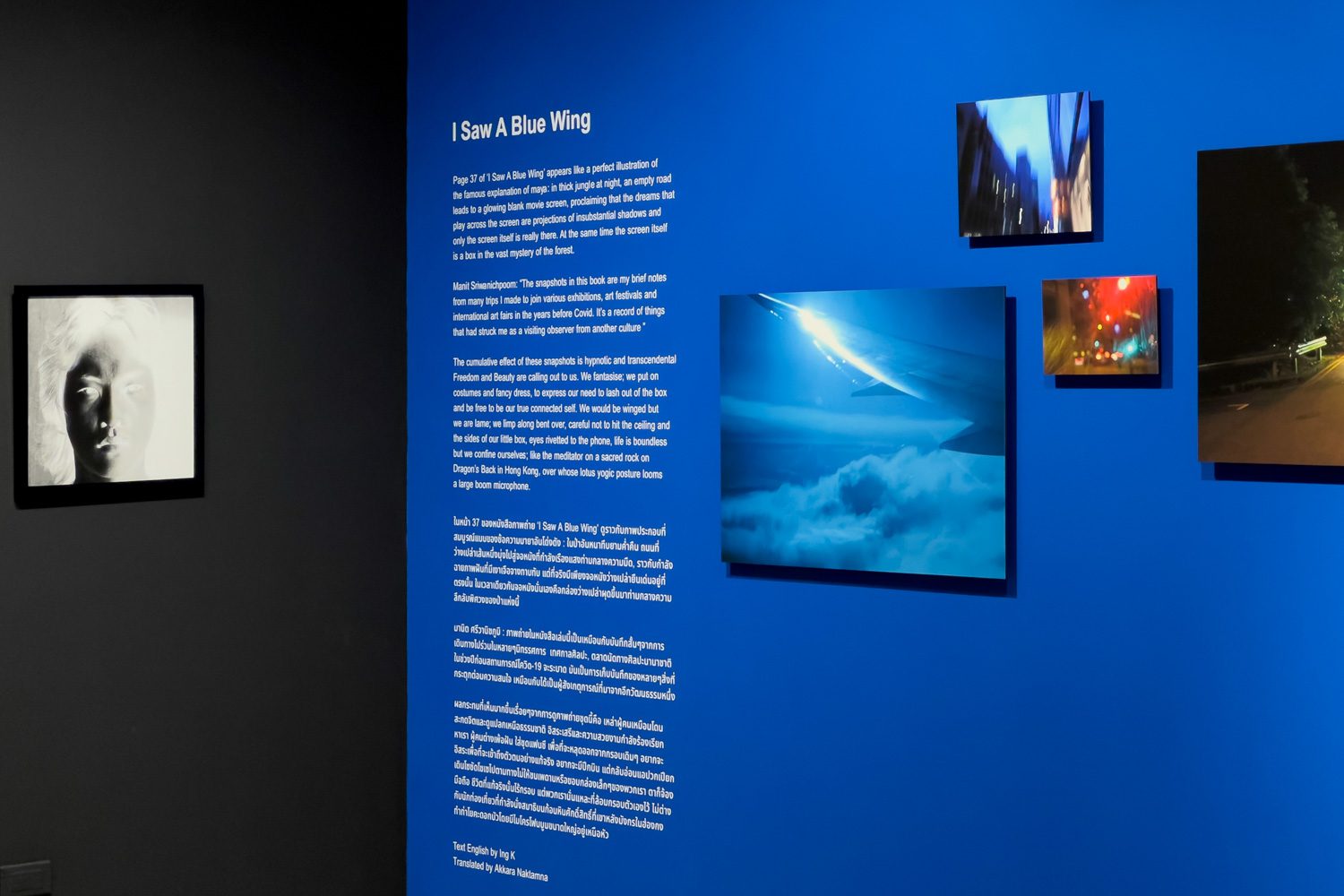
Regardless of the ideologies or intentions behind these meanings and how shallow they seem to be, the public has learned to accept these colors and what they represent. It is evident from the fact that many Red Shirt supporters refuse to wear a yellow shirt, and the same is true for Yellow Shirt supporters, who would never appear in public wearing a red shirt (Chinese New Year may be an exception). For Manit, putting meaning in colors has split Thai society into two polarizing ends, culminating in the country’s stagnated development, not to mention a consumerist economy. His perspective on the subject can be seen in ‘Afterlife So Pink #1,’ an installation in which he placed the Pink Man figure inside a resin block shaped like an ice cube. The piece is then placed atop two ice tanks that one is painted red and another is blue. Pink Man’s supermarket trolley is wired with IV tubes in another installation, ‘Stay Pink’ (2023), implying an attempt to keep consumerist behaviors alive. This is because while a polarized society is beneficial to the ruling class, once the effects reach the people’s consumption, capitalism becomes weaker, and that is when the upper-class and corporate entities begin to experience losses.

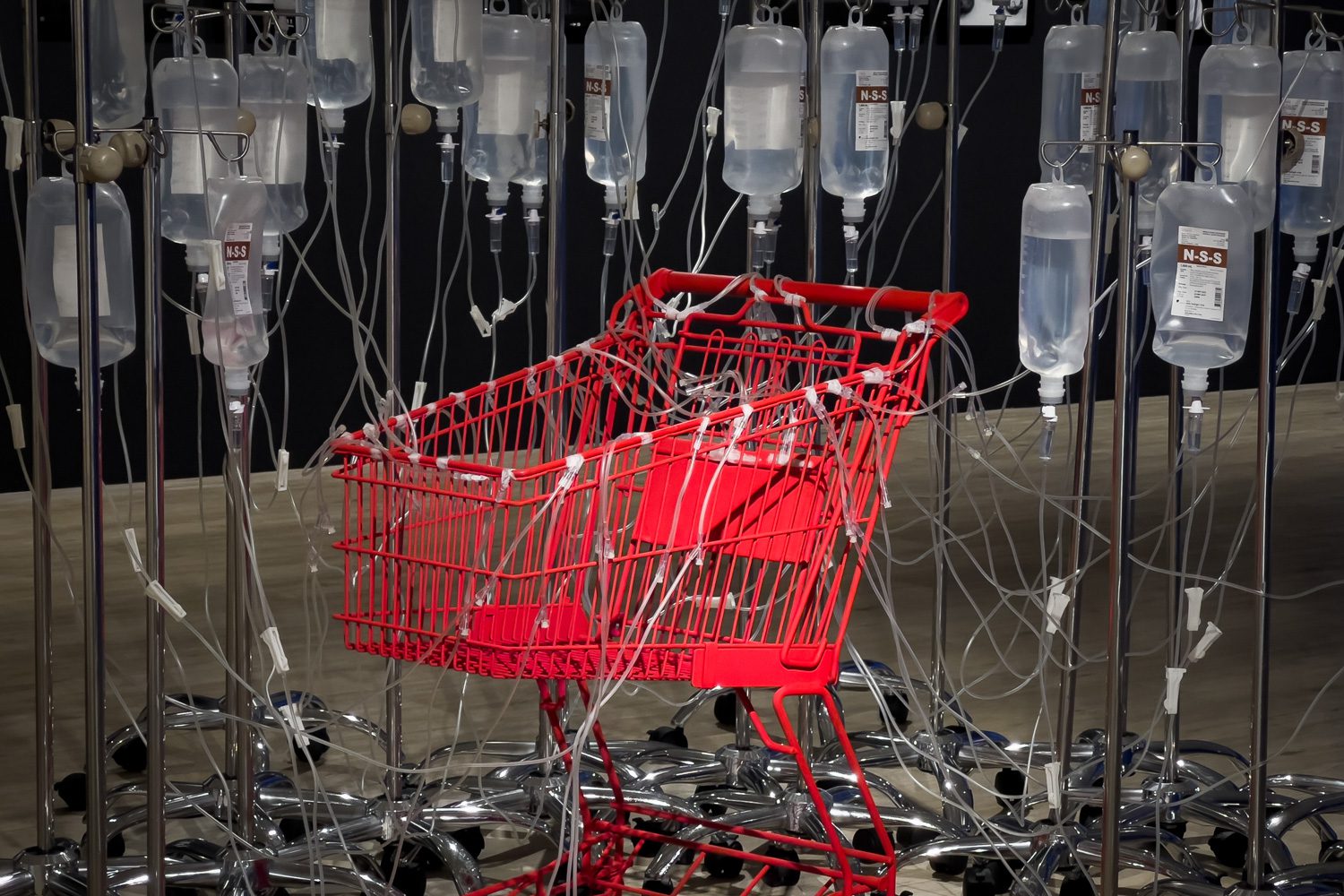
In Manit’s Pink Man series, Pink Man is a disgusting-looking man in a shiny, shocking pink suit. In the real world, Pink Man exists in all kinds of clothes. He could be someone wearing a suit of a different color. To figure out who the Pink Man is, we might have to look deeper, through all the color-coated surfaces.
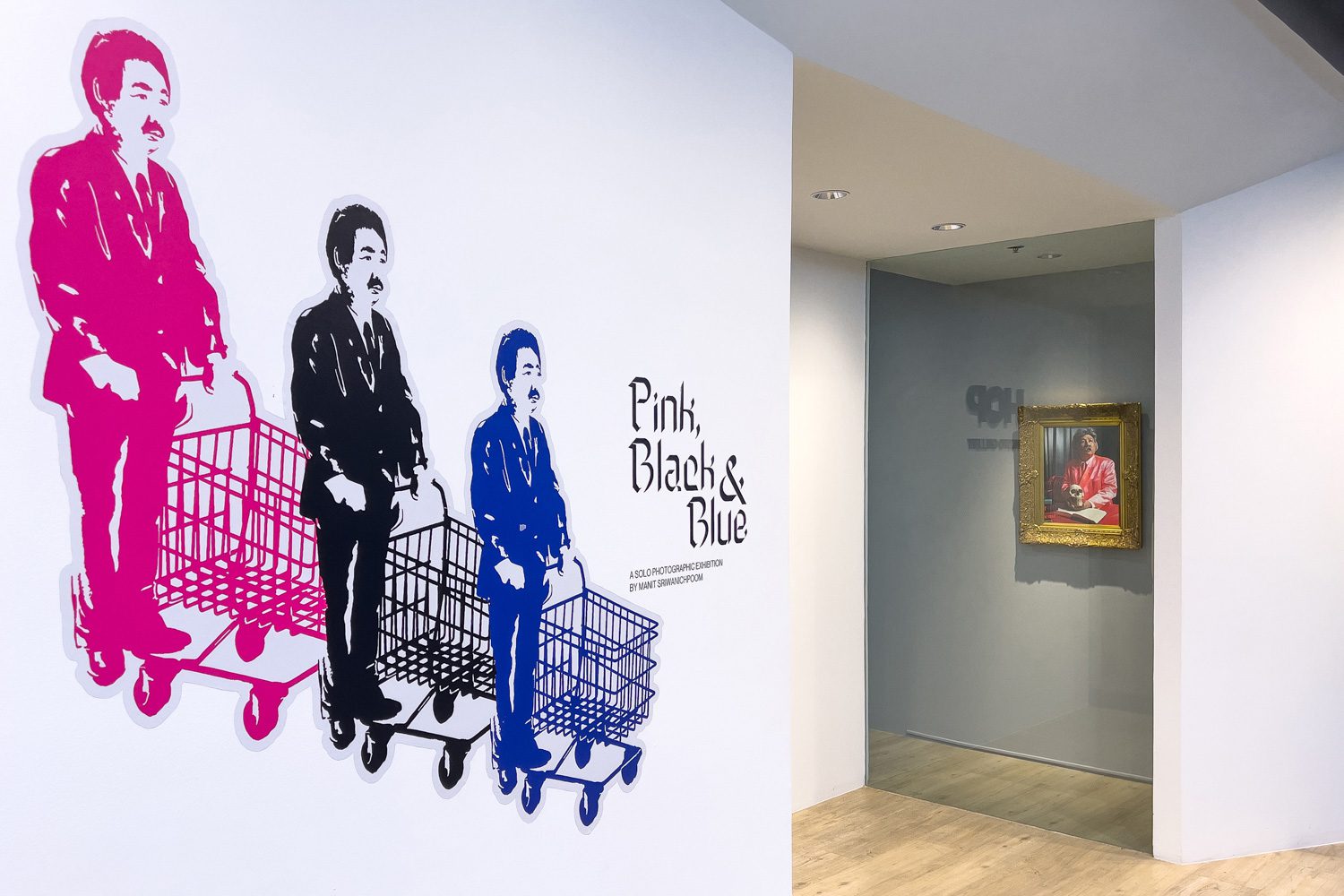
Pink, Black & Blue: A Solo Photographic Exhibition by Manit Sriwanichpoom is now showing at Hub of Photography (HOP), 3rd floor, MUNx2, Season Square Srinakarin Shopping Mall until April 9th, 2023.























